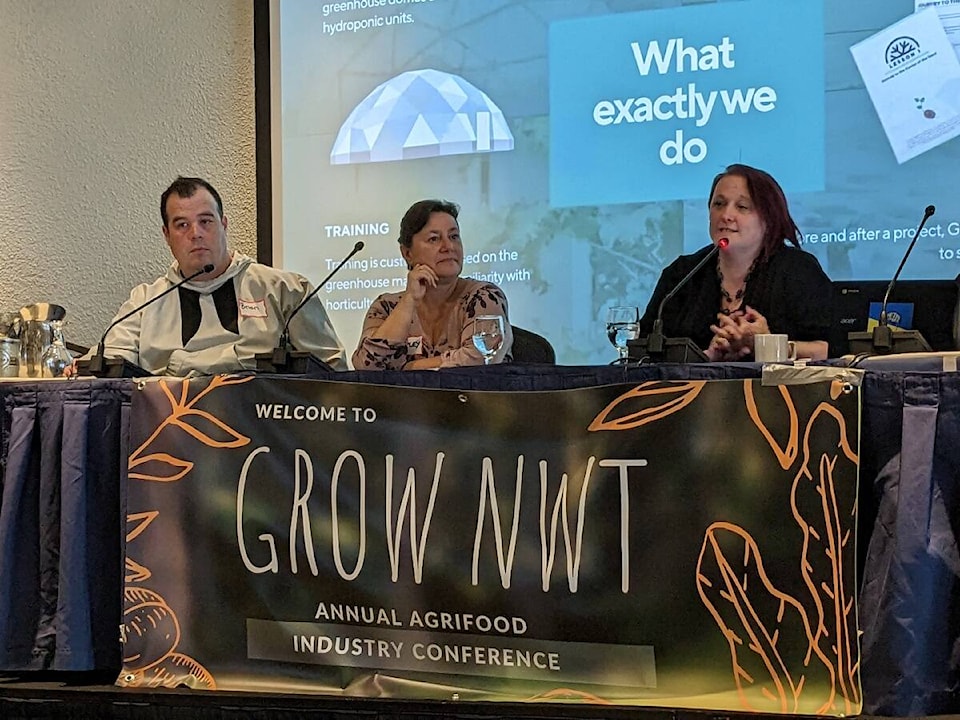The Grow NWT Agrifood conference was an opportunity for enthusiasts to learn anything agriculture, from herding reindeer to managing your very own greenhouse.
Reygan Solotki, one of the presenters at the conference in the Explorer Hotel on Feb. 24, spoke about how residents can grow food locally and she addressed a common misconception related to agriculture in the North.
“I always laugh about people asking how much sunlight is required because they have this idea that there’s not enough in the North,” she said. “In fact, we have too much.
“You’re getting 24 hours of sun for most of the growing period or at least 18 hours of sun.
“Everything needs to sleep, including your tomatoes.”
She said that the growing season in the NWT is also very long, which is a good thing.
“From February until November, there’s usually around 14 to 16 hours of sunlight minimum, and that’s the sweet spot for growing you’re looking for.
For those determined to grow in the cold, insulation is one of the keys.
“You can do some simple insulation techniques: use a nice polycarbonate greenhouse, (stone wool) flooring; we use an insulated tarp on the outside that we keep fully closed at night and we lift it up when the sun is going down so that that heat comes in; water ponds for thermal mass as well as black beds.”
Solotki suggests taking advantage of the resources around you to create a practical garden.
“You have heat at home,” she said. “You put your greenhouse next to your home, next to your building, next to your workplace. There’s exhaust heat being wasted.
“You can grow food in your house with a simple light. Do sprouting in jars if that’s all you can do.
“There’s so many innovative ways to grow your own food without breaking the bank.”
Brian Wade, director of the Inuvialuit Community Economic Development Organization and another conference speaker, manages a team that herds approximately 3,000 reindeer in the Beaufort Delta.
“We have a little bit of growth to do before we feel to confident enough to start harvesting them,” he said. “The main goal is to be able to cull these animals and feed the Inuvialuit people later on.”
Shirley Coumont, community liaison officer for North Slave Metis Alliance, said that her pursuit of agriculture began as a child when she was stricken with illness.
A medical professional told her that time spent in her garden was part of her recovery.
“He said that was the way for me to heal quicker, to be outside, especially in the garden because of its healing properties,” she said. “That stuck with me.”
“Even though my body was sick, my chest was fully congested, I was on my way to healing and it was a beautiful experience. I’ll never forget it.”
In 2021, she decided that she wanted to be in the agriculture industry. She had been gardening since the year 2000.
“It became a passion when I was a young mother and had a trailer, had a yard, and did everything.
“It wasn’t until reconciliation day in 2021 that there was a shift. I was in the backyard, feeding my soul, connecting with the Earth, and working with the land to prepare it for the next summer’s gardening.
“I felt happy and whole. As a life coach, I was always looking for that way how I could help others in the North to connect.”
The two-day event, which started on Thursday, was hosted by the Territorial Agrifood Association and sponsored by the federal and territorial governments, Riverside Growers, the NWT Egg Producers Board, the North Slave Metis Alliance and North Creative Agency.
